How to use testRigor’s test recorder for record and playback testing?
|
|
Recording user actions and generating automation steps is a common initial step in codeless automation, and testRigor offers a more advanced approach to test script creation. The recorder option remains available for those who prefer it within testRigor. In this article, let’s see how we can we use the record test steps using the testRigor recorder.
Let us set up the test suite first.
Setting up test Suite
Step 1: Log in to your testRigor app with your credentials.
Step 2: Set up the test suite for the website testing by providing the information below:
- Test Suite Name: Provide a relevant and self-explanatory name.
- Type of testing: Select from the following options: Desktop Web Testing, Mobile Web Testing, Native, and Hybrid Mobile, based on your test requirements.
- URL to run test on: Provide the application URL you want to test.
- Testing credentials for your web/mobile app to test functionality, which requires user to login: You can provide the app’s user login credentials here and need not write them separately in the test steps then. The login functionality will be taken care of automatically using the keyword login. However, this is an optional field and can be skipped if not relevant.
- OS and Browser: Choose the OS Browser combination on which you want to run the test cases.
- Number of test cases to generate using AI: You can simplify your test creation further by opting to generate test cases based on the App Description text. This feature works on generative AI.
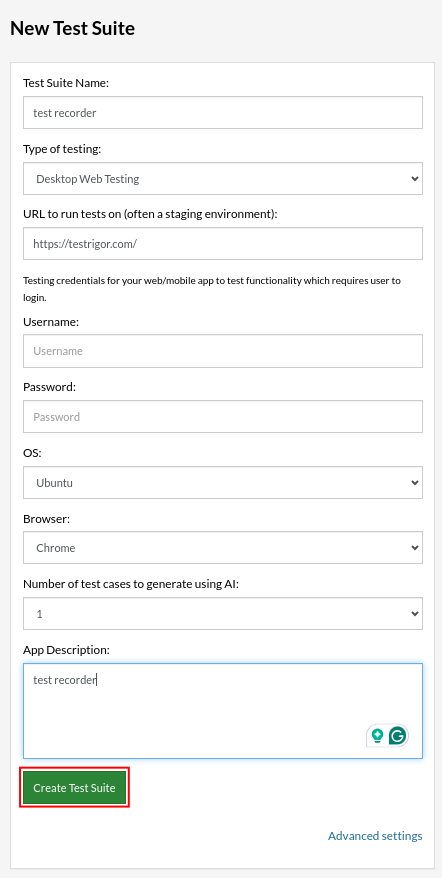
Step 3: Click on Create Test Suite.
- On the next screen, you can let AI generate the test case based on the app description you provided while creating the Test Suite. However, for now, select do not generate any test, since we will write the test steps ourselves.
testRigor Recorder
testRigor recorder works only on the Chrome browser. It’s a Chrome browser extension that can be added to the browser.
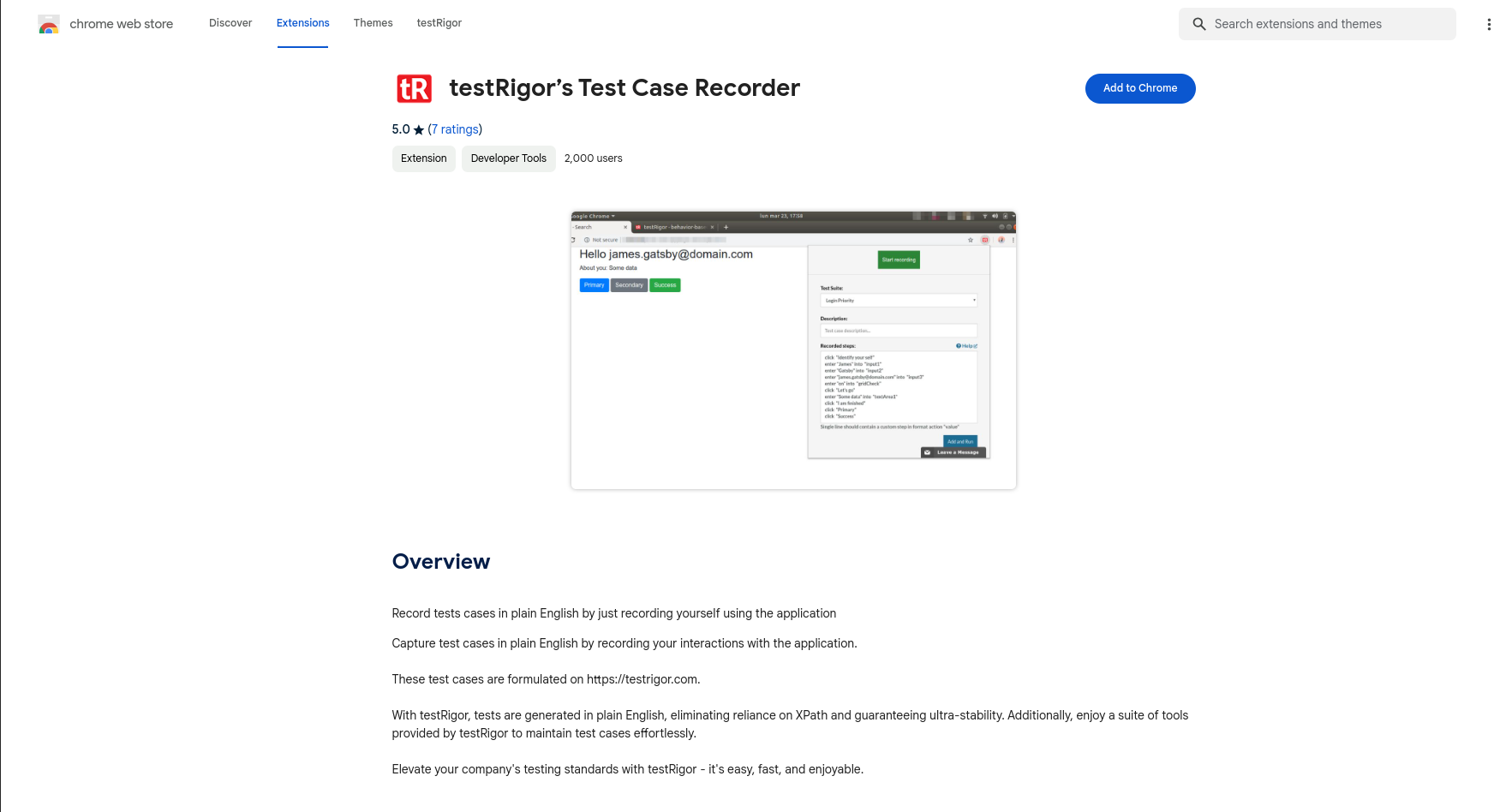
Step 1: Click the Add to Chrome, and click Add extension in the pop-up.
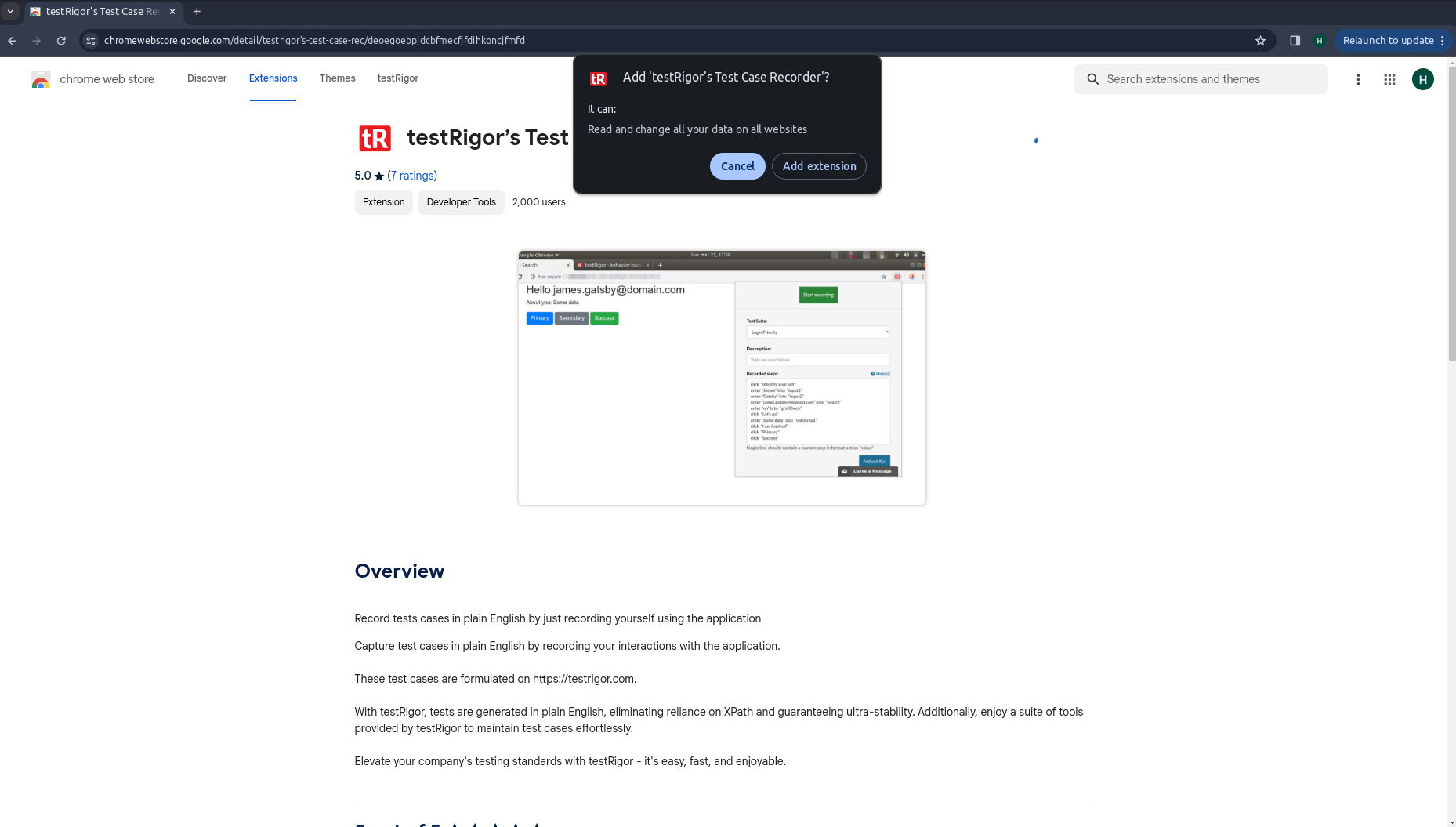
Step 2: Once added, the recorder extension will be available in the browser’s extensions. You can pin it to be visible in the browser’s extension bar.
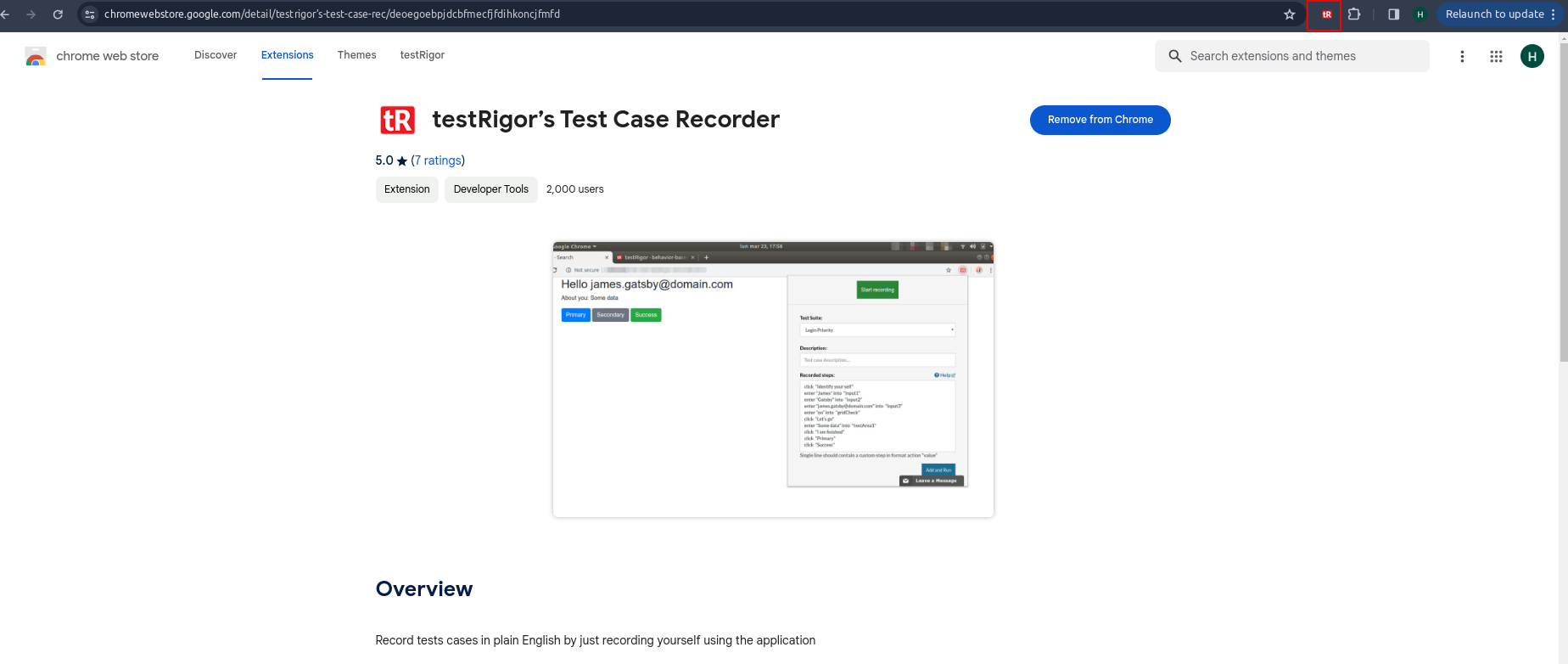
Now, let’s see how we can record the user actions using it.
Recording User Actions
Step 1: Click on the testRigor extension; you can see a green button “Start new recording“.
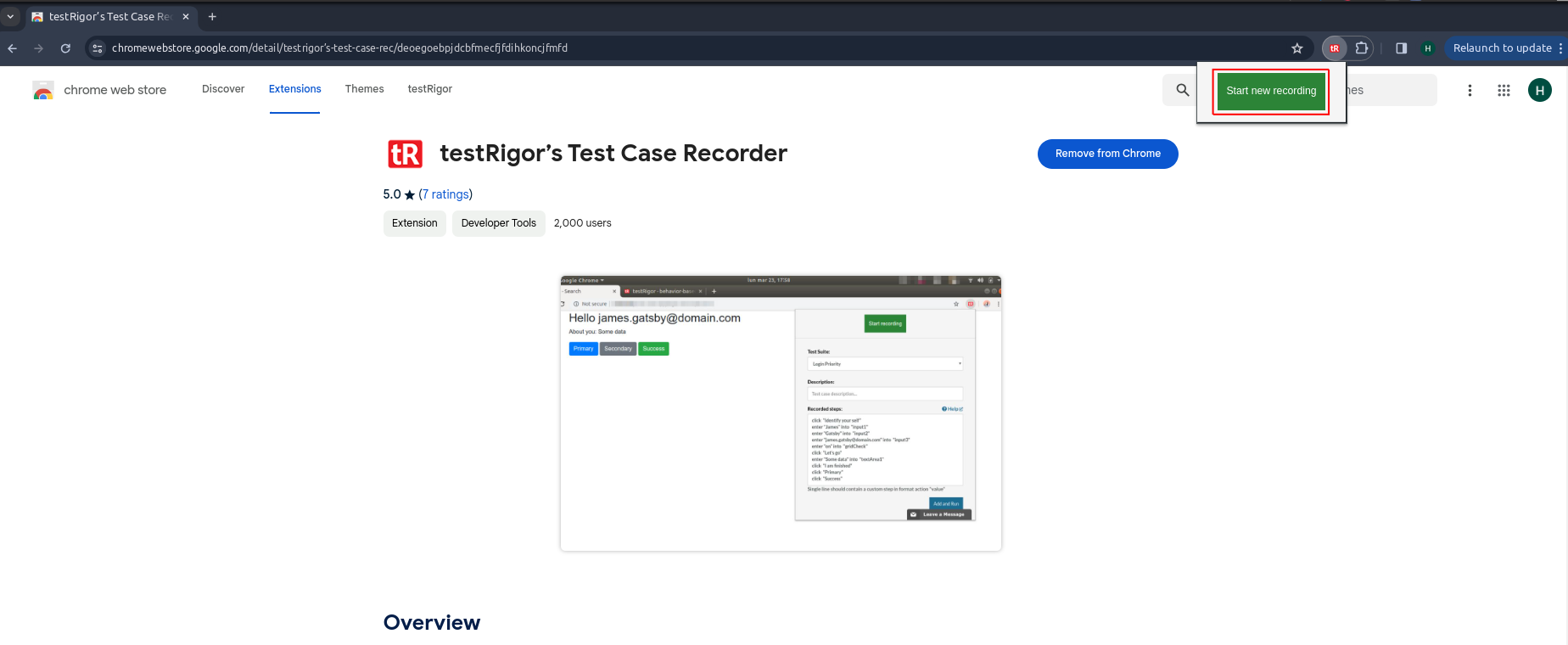
Step 2: Click the “Start new recording” button, and the testRigor extension icon will blink, which means the recording has started.
Now, the testRigor recorder is ready to capture any user action.
Step 3: For example, we will record a scenario where:
User goes to the Amazon website → searches for Samsung Galaxy S24 Ultra → Clicks on Samsung S24 Ultra → Selects Color as Titanium Violet → Selects Memory as 256 GB → Adds 2 Quantity → Selects No Thanks to Warranty → Adds the phone to the cart → Navigates to the Cart → Checkout.
open url "https://www.amazon.com/" enter "samsung galaxy s24 ultra" into "Search Amazon." click "Galaxy S24 Ultra Cell Phone, 512GB AI Smartphone, Unlocked Android, 50MP Zoom Camera, Long Battery L" click "Titanium Violet" above and on the right of "Phone Only" click "256GB" enter "2" into "Quantity" below the "In Stock" click "No Thanks" click "Go to Cart" above the "sign in to your account" click "checkout"
Step 5: Once we stop recording, the test scripts populate, and we have two input fields: Test Suite and Description.
Step 6: In Test Suite, we can write “test recorder,” and we will write the description as “amazon recorder“. Once we have added the details, click the “Add and Run” button at the bottom.
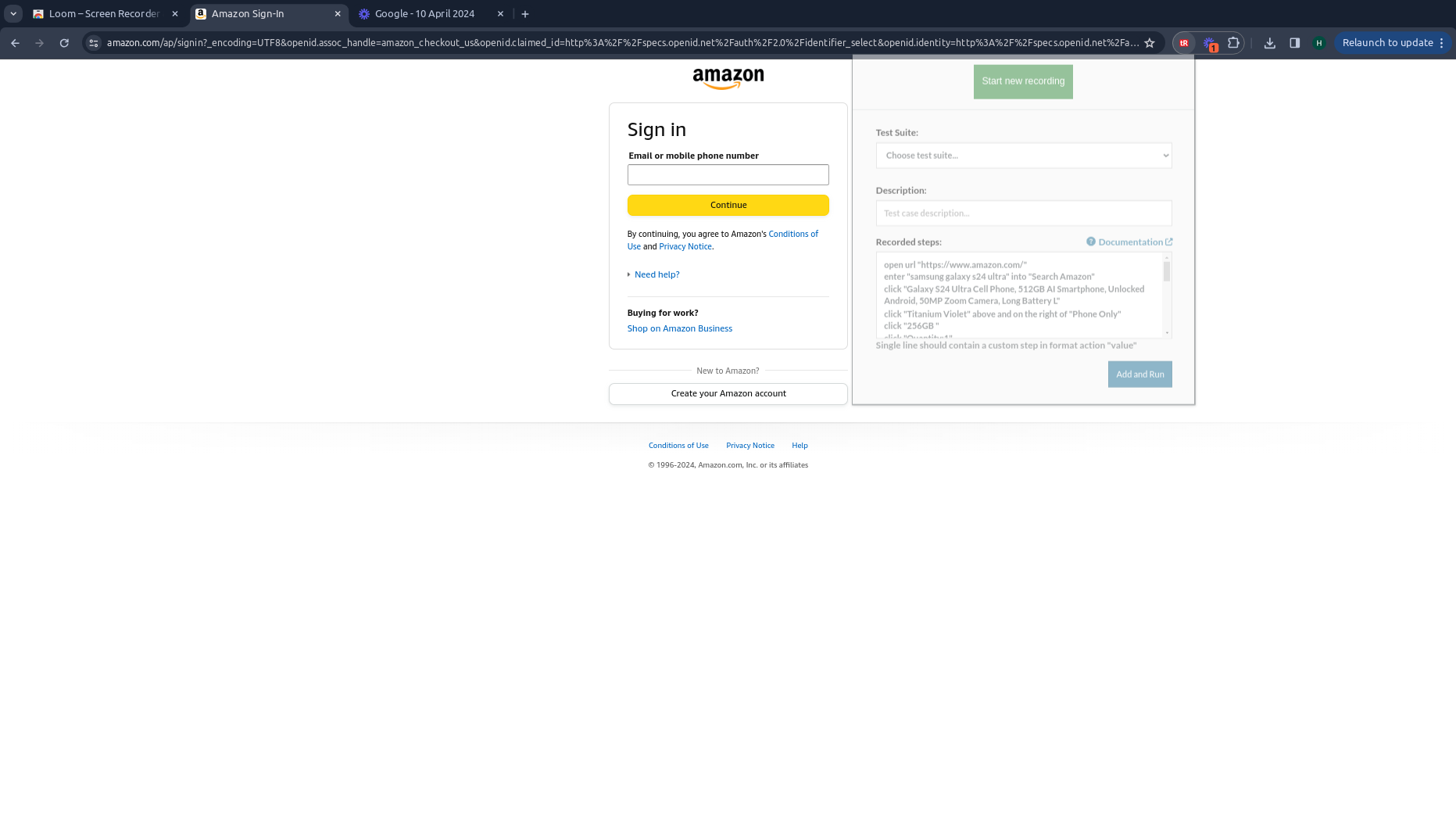
Let’s see if the test case is reflected in the test suite we created in testRigor.
Checking in testRigor Test Suite
The test case is available in the test suite we mentioned, i.e., the “test recorder”.
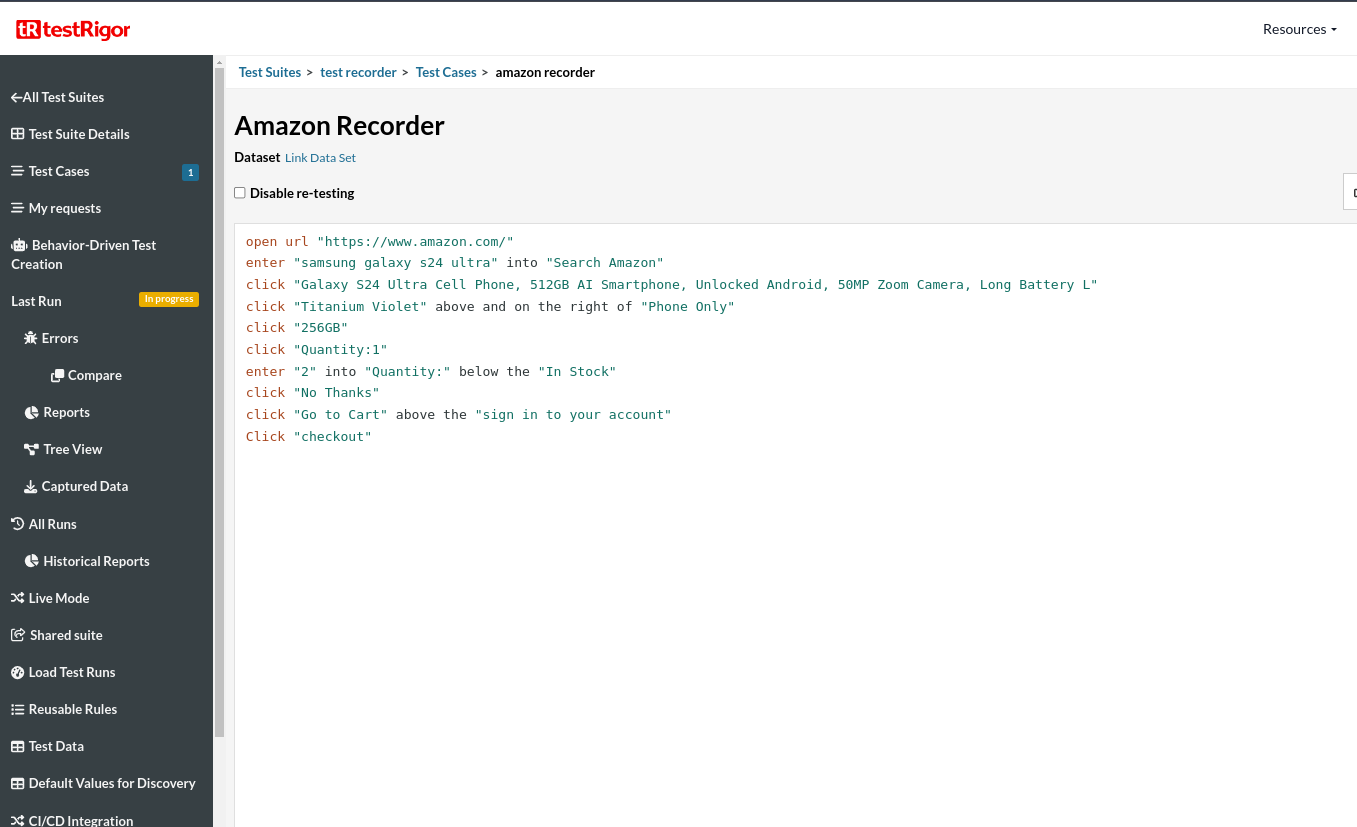
We can also modify a few lines to avoid any failures in the future. For example, we can provide a generic name instead of the exact device name.
Instead of this – click “Galaxy S24 Ultra Cell Phone, 512GB AI Smartphone, Unlocked Android, 50MP Zoom Camera, Long Battery L”
We can provide – click “Galaxy S24 Ultra Cell Phone”
This makes the test case fail-proof for future runs. If you wish to make any other changes, you can do so in plain English.
Execution Results
Once the test is executed, you can view the execution details, such as execution status, time spent in execution, screenshots, error messages, logs, video recordings of the test execution, etc. Logs and error text are available easily in case of any failure in a few clicks.
You can also download the complete execution with steps and screenshots in PDF or Word format through the ‘View Execution‘ option.
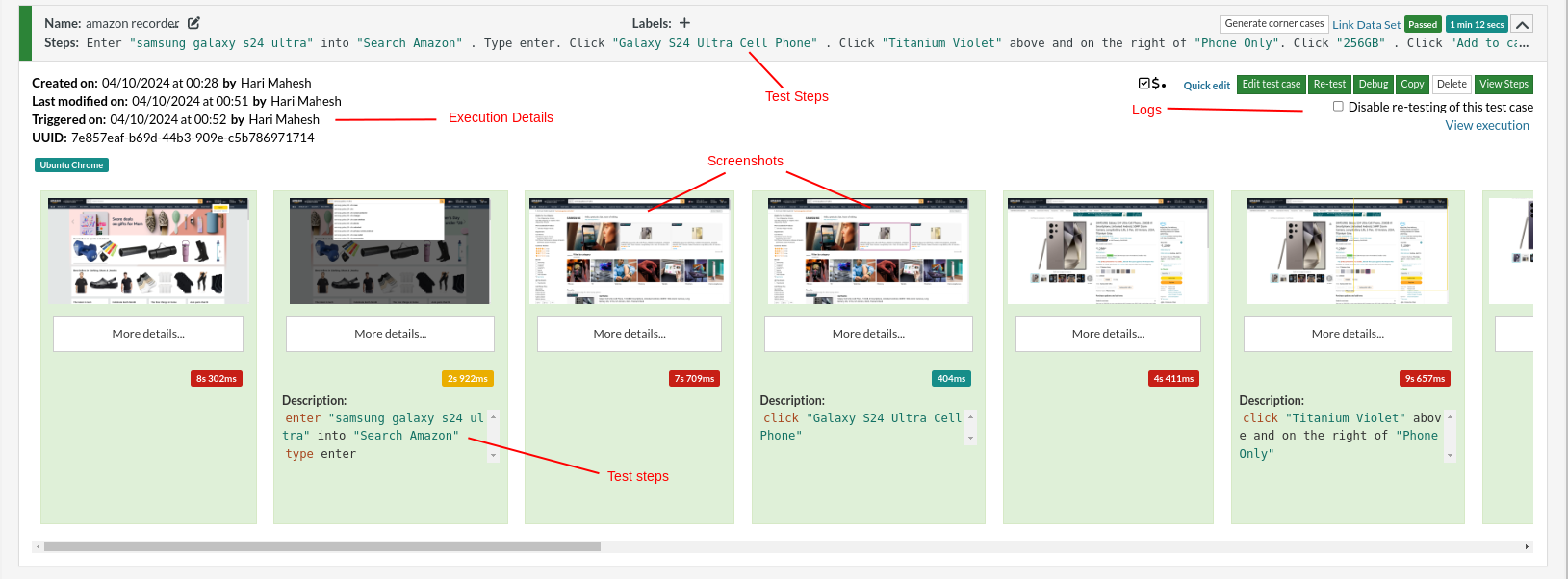
testRigor’s Capabilities
Apart from the simplistic test case design and execution, some advanced features help you test your application using simple English commands.
- Reusable Rules (Subroutines): You can easily create functions for the test steps that you use repeatedly. You can use the Reusable Rules to create such functions and call them in test cases by simply writing their names. See the example of Reusable Rules.
- Global Variables and Data Sets: You can import data from external files or create your own global variables and data sets in testRigor to use them in data-driven testing.
- 2FA, QR Code, and Captcha Resolution: testRigor efficiently manages the 2FA, QR Code, and Captcha resolution through its simple English commands.
- Email, Phone Call, and SMS Testing: Use simple English commands to test the email, phone calls, and SMS. These commands help validate 2FA scenarios, with OTPs and authentication codes being sent via email, phone calls, or via phone text.
- File Upload/ Download Testing: Execute the test steps involving file download or file upload without the requirement of any third-party software. You can also validate the contents of the files using testRigor’s simple English commands.
- Database Testing: Execute database queries and validate the results fetched.
testRigor enables you to test web, mobile (hybrid, native), API, and desktop apps with minimum effort and maintenance.
Additional Resources
- Access testRigor documentation to learn about more valuable capabilities
- Top testRigor’s features
- How to perform end-to-end testing using testRigor
- How to do mobile testing using testRigor?
- How to do file testing using testRigor
- How to do email testing using testRigor
| Achieve More Than 90% Test Automation | |
| Step by Step Walkthroughs and Help | |
| 14 Day Free Trial, Cancel Anytime |












